
The Action off Bodö, 1940
29th June 2023, 4 Comments
World War 2 Naval, General Quarters 3, 1/2400 scale
We were all at sea this week, somewhere off the Norwegian coast. The game was set in mid April 1940, and was loosely based on historic forces in the area, rather than a real engagement. The premise was that the Germans were busy landing troops at Trondheim and Narvik, while a powerful covering force was at sea, with orders to keep the Royal Navy at bay.  With everyone else away, it was just Sean 1 and I this week. He played the part of Vizeadmiral Lütjens, flying his flag in the battleship Gneisenau, accompanied by her sister ship Scharnhorst and two destroyers (Z4 and Z6). They were heading north, while a second Kriegsmarine force – the heavy cruiser Admiral Hipper and a third destroyer (Z11) were approaching from the south-west – the direction of Trondheim.
With everyone else away, it was just Sean 1 and I this week. He played the part of Vizeadmiral Lütjens, flying his flag in the battleship Gneisenau, accompanied by her sister ship Scharnhorst and two destroyers (Z4 and Z6). They were heading north, while a second Kriegsmarine force – the heavy cruiser Admiral Hipper and a third destroyer (Z11) were approaching from the south-west – the direction of Trondheim.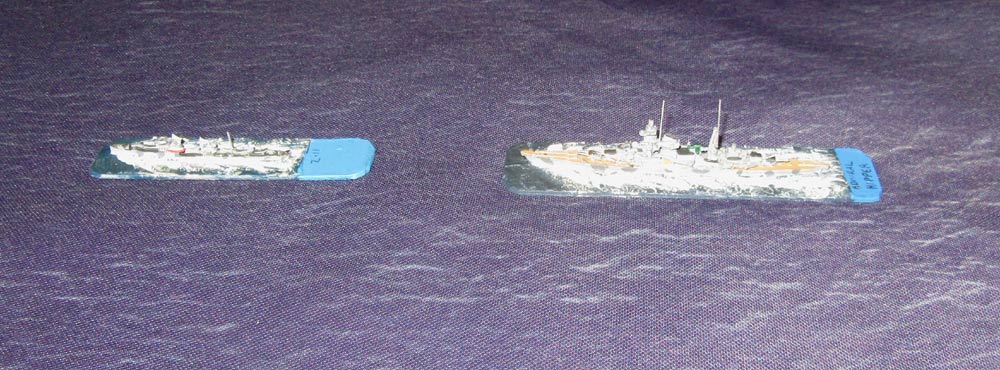 The British Home Fleet were in the area too – Vice Admiral Whitworth in the battlecruiser Renown accompanied by two destroyers (Hero and Hyperion) was heading south, from the direction of the Lofoten Islands, while reinforcements – the battleship Warspite, the light cruiser Aurora and the destroyer Hasty were approaching him from the north-west. All four groups then, were on a collision course!
The British Home Fleet were in the area too – Vice Admiral Whitworth in the battlecruiser Renown accompanied by two destroyers (Hero and Hyperion) was heading south, from the direction of the Lofoten Islands, while reinforcements – the battleship Warspite, the light cruiser Aurora and the destroyer Hasty were approaching him from the north-west. All four groups then, were on a collision course!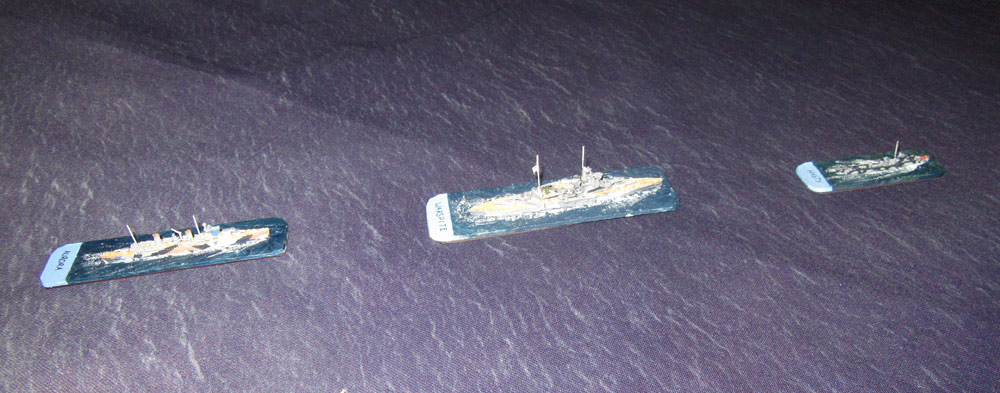 The real kicker was the weather. it was blowing a gale, which reduced the speed of all ships, and made accurate gunnery difficult. Dawn had just broken, but the visibility was poor, due to sleet squalls, so it varied from four miles to almost nothing. The Germans had a basic Seetakt radar, but in these conditions it wasn’t much more reliable than the naked eye.
The real kicker was the weather. it was blowing a gale, which reduced the speed of all ships, and made accurate gunnery difficult. Dawn had just broken, but the visibility was poor, due to sleet squalls, so it varied from four miles to almost nothing. The Germans had a basic Seetakt radar, but in these conditions it wasn’t much more reliable than the naked eye.  So, the four groups of ships continued on their original course until they sighted the enemy – the destroyers escorting the German battleships and Renown spotting each other first, at a range of 3.5 miles. Soon the capital ships joined in, although only the forward guns of Scharnhorst and Gneisenau could bear on Renown. Still, it was twelve German guns to six British ones.
So, the four groups of ships continued on their original course until they sighted the enemy – the destroyers escorting the German battleships and Renown spotting each other first, at a range of 3.5 miles. Soon the capital ships joined in, although only the forward guns of Scharnhorst and Gneisenau could bear on Renown. Still, it was twelve German guns to six British ones. The British seemed to find the range faster, and those 15-inch shells began slamming into Gneisenau, causing two magazine fires in succession that led to the flooding of them. So, Lütjens’ flagship lost both her forward turrets. That evened the odds, but the Germans were hitting back too, causing extensive hull-damage to Renown. The destroyers were also firing at each other, at point-blank range.
The British seemed to find the range faster, and those 15-inch shells began slamming into Gneisenau, causing two magazine fires in succession that led to the flooding of them. So, Lütjens’ flagship lost both her forward turrets. That evened the odds, but the Germans were hitting back too, causing extensive hull-damage to Renown. The destroyers were also firing at each other, at point-blank range.  A couple of miles to the west Warspite was now firing at Hipper, when she could glimpse her through the sleet squalls. The Germans though, concentrated on the leading British destroyer, the Hasty, which was badly knocked about by Hipper’s shells. A fresh squall hit them, and when visibility cleared the German cruiser found herself on a collision course with Renown! Actually, this was all part of Sean’s plan – keeping Hipper away from Warspite until she could join forces with the German battleships.
A couple of miles to the west Warspite was now firing at Hipper, when she could glimpse her through the sleet squalls. The Germans though, concentrated on the leading British destroyer, the Hasty, which was badly knocked about by Hipper’s shells. A fresh squall hit them, and when visibility cleared the German cruiser found herself on a collision course with Renown! Actually, this was all part of Sean’s plan – keeping Hipper away from Warspite until she could join forces with the German battleships.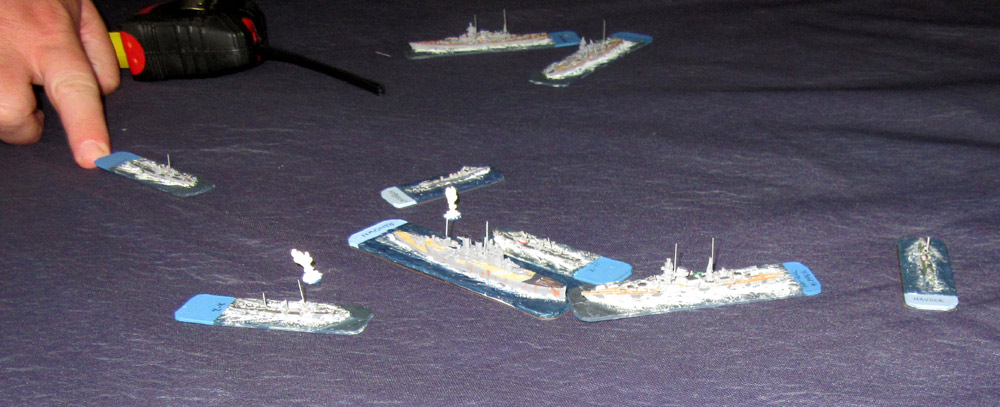 Amazingly, the collision never happened, and cruiser and battlecruiser scraped down each others’ sides. Meanwhile Sean’s destroyers were swarming around Renown too, but were too close to her to effectively fire their torpedoes. It was a real free-for-all. All of the Norwegian Sea to play in, and everyone headed towards the same little spot! However, the bloodied but unbowed pair of British destroyers escorting Renown pulled away to the south, which drew off their German counterparts, who gave chase.
Amazingly, the collision never happened, and cruiser and battlecruiser scraped down each others’ sides. Meanwhile Sean’s destroyers were swarming around Renown too, but were too close to her to effectively fire their torpedoes. It was a real free-for-all. All of the Norwegian Sea to play in, and everyone headed towards the same little spot! However, the bloodied but unbowed pair of British destroyers escorting Renown pulled away to the south, which drew off their German counterparts, who gave chase. 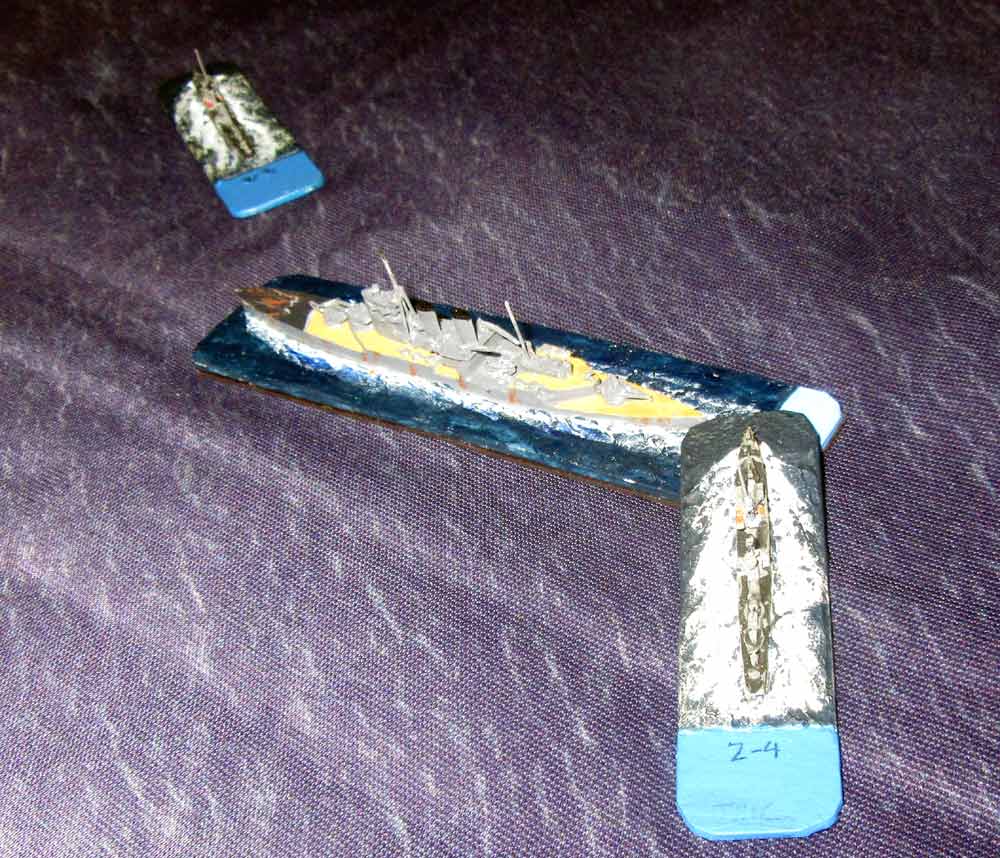 Well, apart from the German destroyer Richard Beitzen (Z-4), which came so close to Renown that she almost rammed her as she raced past. Over to the west, Warspite and her escorts Aurora and Hasty were effectively out of the fight for the moment, lost amid the sleet squalls. Hipper had passed renown, and was now heading north at full speed, in an attempt to get away.
Well, apart from the German destroyer Richard Beitzen (Z-4), which came so close to Renown that she almost rammed her as she raced past. Over to the west, Warspite and her escorts Aurora and Hasty were effectively out of the fight for the moment, lost amid the sleet squalls. Hipper had passed renown, and was now heading north at full speed, in an attempt to get away. 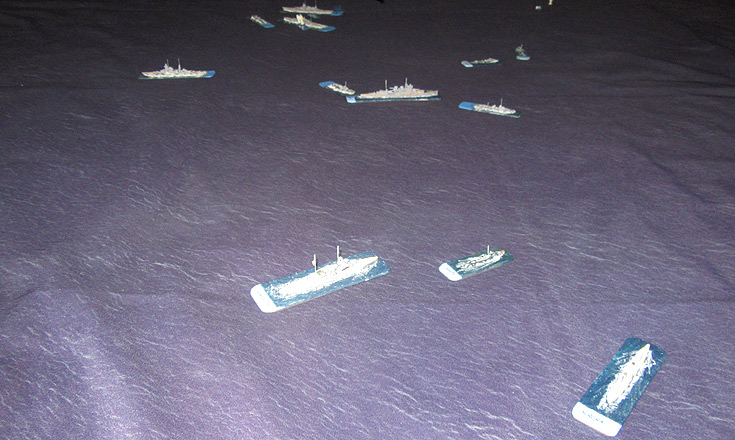 Generally though, apart from the squalls, visibility had steadied at around three miles, and Scharnhorst and Gneisenau were now due east of Renown. At that point Hero and Hyperion launched a full salvo of torpedoes – eight from each destroyer – in the general direction of the German battleships. The range was around 3,000 yards. When everyone had plotted and moved their ships we worked out what happened. Four missed both battleships, but the rest had a chance of hitting. So, we worked it out.
Generally though, apart from the squalls, visibility had steadied at around three miles, and Scharnhorst and Gneisenau were now due east of Renown. At that point Hero and Hyperion launched a full salvo of torpedoes – eight from each destroyer – in the general direction of the German battleships. The range was around 3,000 yards. When everyone had plotted and moved their ships we worked out what happened. Four missed both battleships, but the rest had a chance of hitting. So, we worked it out. 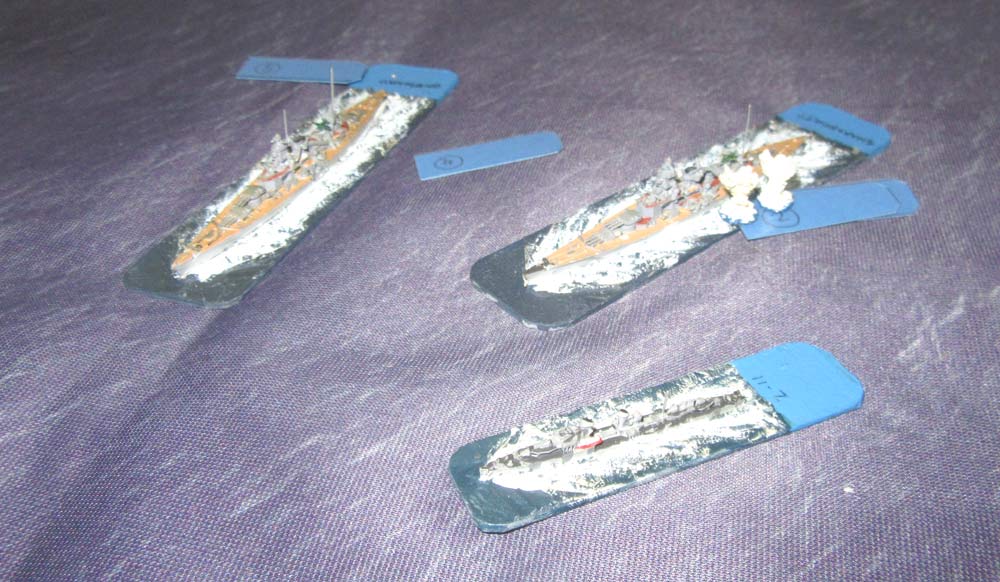 It turned out that Hero’s torpedoes were just out of range of Gneisenau. So, the Vizeadmiral lived to tell the tale. Scharhorst though, took two hits, both forward, which not only caused heavy flooding, but they also knocked out both of her forward turrets. That pretty much made the two German battleships crippled, and ripe for the slaughter. What saved them was the weather. The squalls became general, and visibility dropped to virtually nothing. So, Whitworth reluctantly gave the order to break off the action.
It turned out that Hero’s torpedoes were just out of range of Gneisenau. So, the Vizeadmiral lived to tell the tale. Scharhorst though, took two hits, both forward, which not only caused heavy flooding, but they also knocked out both of her forward turrets. That pretty much made the two German battleships crippled, and ripe for the slaughter. What saved them was the weather. The squalls became general, and visibility dropped to virtually nothing. So, Whitworth reluctantly gave the order to break off the action.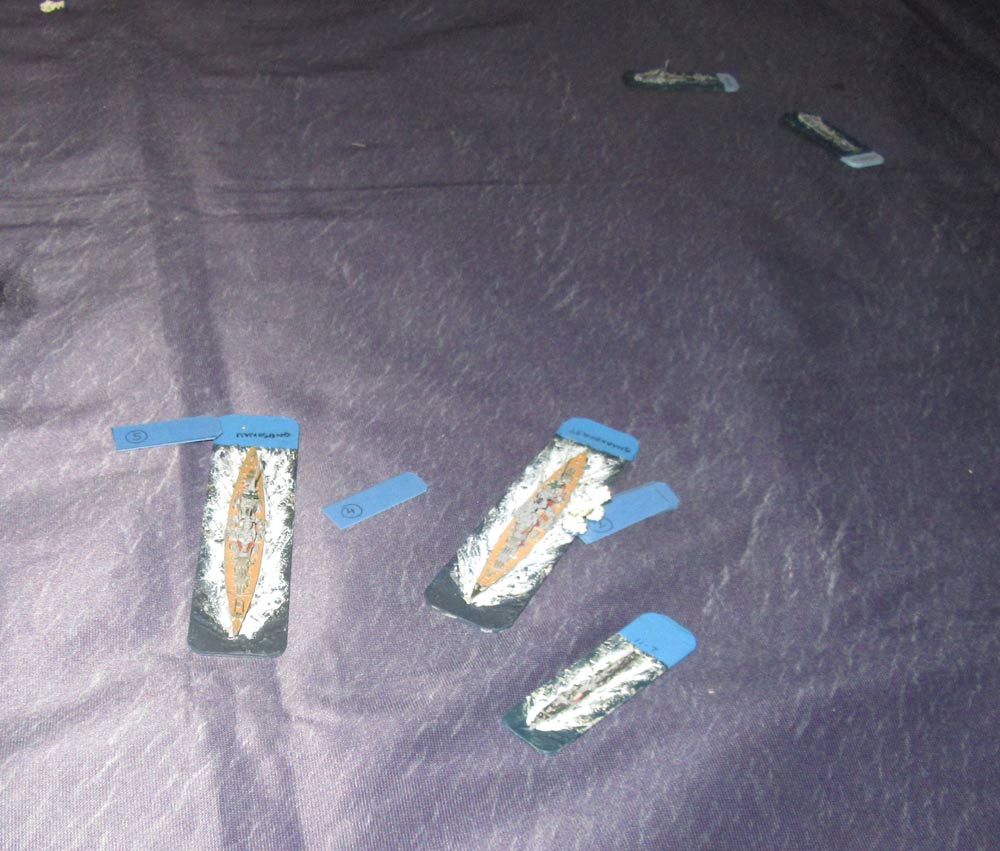 The game ended with all of the larger German ships limping off towards the north – all of them with quite heavy damage to them. Two of the three German destroyers were further to the south-west, in action with the British destroyers, but Lütjens recalled them, before they got pounded by the British capital ships. So, the game ended in a British victory – made more significant because with Whitworth between Lütjens and the vulnerable transports in Narvik, he was free to wreak havoc among the German transports there. All in all it was a fast-paced, enjoyable game, made all the more challenging by the weather!
The game ended with all of the larger German ships limping off towards the north – all of them with quite heavy damage to them. Two of the three German destroyers were further to the south-west, in action with the British destroyers, but Lütjens recalled them, before they got pounded by the British capital ships. So, the game ended in a British victory – made more significant because with Whitworth between Lütjens and the vulnerable transports in Narvik, he was free to wreak havoc among the German transports there. All in all it was a fast-paced, enjoyable game, made all the more challenging by the weather!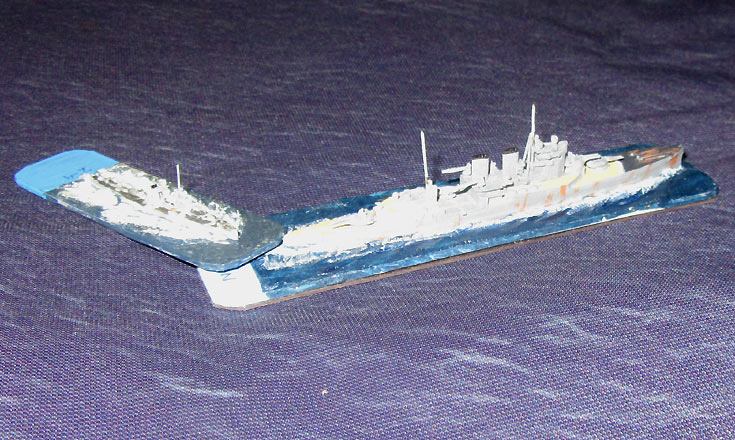





Their Lordships will be pleased, an excellent report!
It was a truly frenetic scrap though, and it could have gone badly for either admiral!
Hey Angus. Mike Evans has introduced the club in Edinburgh to the Nimitz ww2 rules and we have had quite a few games and the rules work really well. Worth a look.
I’ll take a look at them, Peter. I do like GQ3 though.